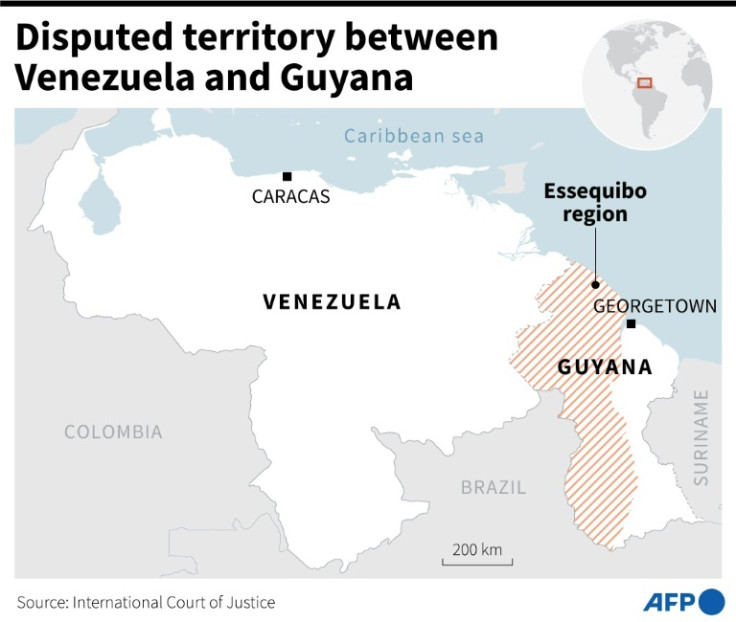
The United States is increasing urgent military aid to Guyana as tensions between the country and Venezuela over the Essequibo region linger, which the latter is threatening to seize, El País reported this week.
Concretely, the Biden administration said it will help Guyana buy new aircraft, helicopters, military drones and radar technology, this last one being a first.
U.S. deputy national security advisor, Jon Finer, and Western Hemisphere senior director Juan González, met with Guyanan officials the day before the agreement was announced.
"That cooperation is fundamentally defensive in nature and grounded in our desire for Guyana to be able to defend its territorial integrity against any possible threats," Finer told reporters late Sunday.
Tensions between Guyana and Venezuela are lower than they were in late 2023, when the Maduro government held a non-binding referendum about annexing the Essequibo, an oil-rich region that represents two-thirds of Guyana's territory but Venezuela claims.

The referendum approved the creation of a Venezuelan province in Essequibo, sparking fears of a military conflict. As tensions grew, the U.S. military assisted Guyana with surveillance flights and sent military advisers. Great Britain also sent a warship to Guyanese waters, with Venezuela also deploying part of its military as a response.
However, they later decreased as mediators intervened and the parties ruled out resorting to force at a crisis summit in Saint Vincent and the Grenadines in December. Guyanese and Venezuelan officials met again in late January in Brazil, which borders with both countries and played a key role in mediating in the conflict.
Essequibo has been administered by Guyana for over a century and is the subject of border litigation before the International Court of Justice (ICJ) in The Hague -- whose jurisdiction in the matter Venezuela rejects.
Venezuela claims Essequibo has historically been considered part of its territory since 1777, when it was part of the Spanish empire, with the Essequibo River forming a natural boundary. Former British and Dutch colony Guyana, however, says the border was ratified in 1899 by an arbitration court in Paris.
The region is home to 125,000 of Guyana's 800,000 citizens, but Caracas has long claimed the region should be under its control.
The squabble was revived in 2015 after US energy giant ExxonMobil discovered huge crude reserves in Essequibo and it reached fever pitch last year after Georgetown started auctioning off oil blocks in the region.
Ever since, Guyana became the country with the largest reserves of crude per capita and seen a massive GDP surge. Guyana announced additional discoveries in November, taking its estimated reserves to at least 10 billion barrels, more than powerhouses Kuwait and United Arab Emirates. In 2020, Guyana's GDP grew by over 40 percent, while the figure the following year was over 20 percent.
© 2025 Latin Times. All rights reserved. Do not reproduce without permission.





